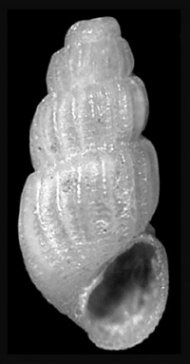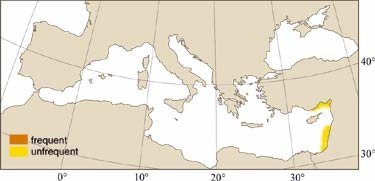
|
Relevant Synonyms
Misidentification
|
|
| photo: G. Buzzuro - E. Greppi |
|
SHORT
DESCRIPTION
color :
white.
common size :
1.5-2 mm. |
DISTINGUISHING CHARACTERISTICS
BIOLOGY / ECOLOGY
habitat :
Mediterranean findings suggest that this is a shallow water species. |
|
1st
Mediterranean record
|

|
|
DISTRIBUTION
|
ESTABLISHMENT SUCCESS
speculated reasons for success :
|
|
|
MODE OF
INTRODUCTION |
IMPORTANCE TO
HUMANS |
|
KEY
REFERENCES
|
|
|
 Pyrgulina pirintella Melvill, 1910
Pyrgulina pirintella Melvill, 1910